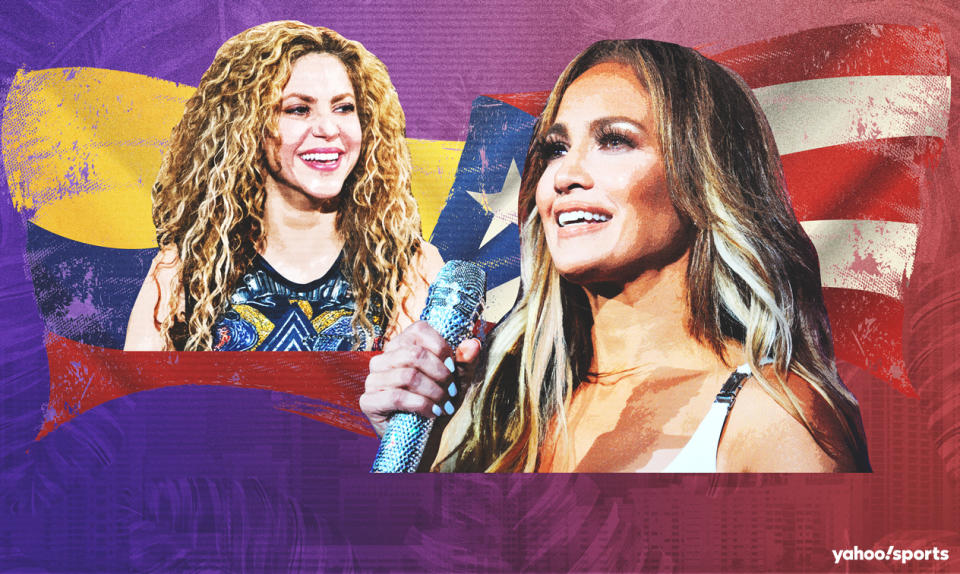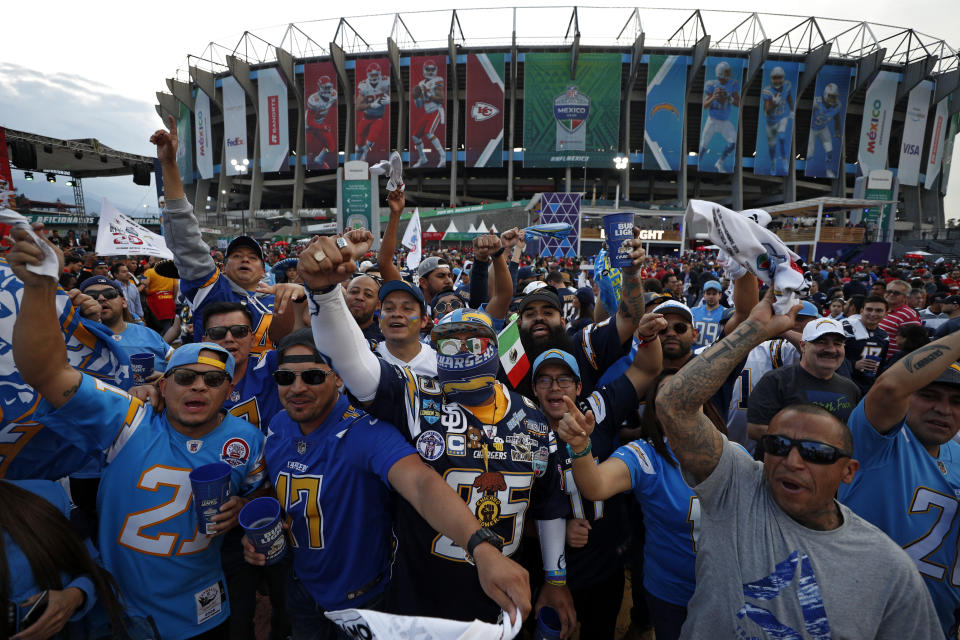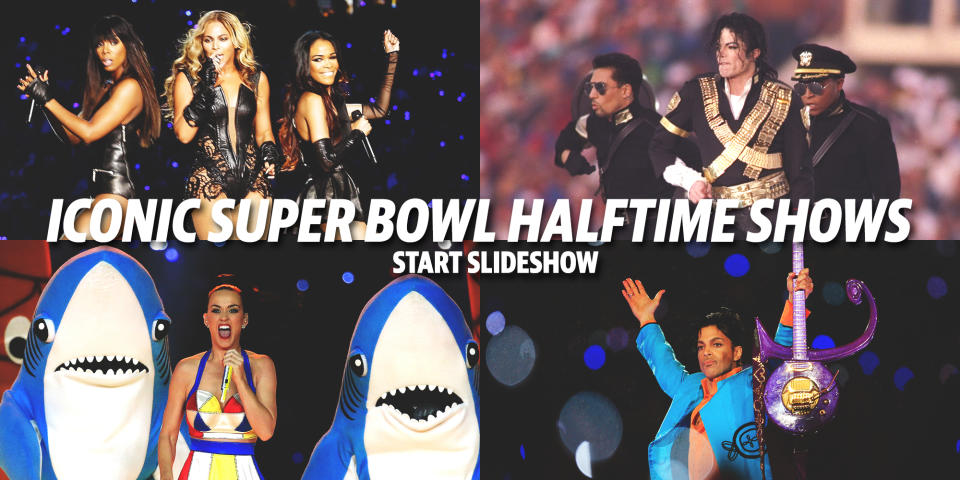The Jennifer Lopez and Shakira halftime show marks new era of Latino representation on the NFL's global stage
For the first time in Super Bowl history, two Latinas — Jennifer Lopez and Shakira — will be headlining the game’s halftime show. Given Miami’s largely Latino population (70 percent) and noting Shakira’s professional relationship with Roc Nation, the lineup is not only a reflection of the community, but also a sign of Jay-Z’s reach, a reason why the league controversially partnered with him last summer.
Lopez has said that she was not only “super excited,” but also that she believed the NFL wanted to make a “statement.” Lopez added that she was “happy to be part of [a] new movement of inclusivity and diversity and embracing women.”
On Thursday at a Super Bowl week news conference in Miami, Lopez called the halftime show honors “empowering.”
“When I think of my daughter, when I think of all the little girls in the world, to be able to have that [and] to see that two Latinas [are] doing this in this country at this time, it's just very empowering for us,” Lopez said.
Shakira echoed a similar sentiment before this week, stating that in light of the Colin Kaepernick controversy, she felt performing was “the right thing to do for the Latino community” and that it was “an opportunity to celebrate [the] culture.”
What began as a musical interlude performed by a college marching band has grown into one of the most viewed pop culture events of the modern era. Since the NFL began incorporating themes, bringing in corporate sponsors, and booking chart-busting musical acts, it has become one of the most anticipated and analyzed spectacles of the present-day.
While the hoopla has generated a massive audience, it too has created a large collection of critics. For the first time in a long time, that latter group seems to have the NFL’s ear … or so league commissioner Roger Goodell would like them to believe.

NFL revamps its approach after Maroon 5 dud
In August 2018, Maroon 5 closed out the 2018 Pro Football Hall of Fame Enshrinement Week. During the show, Adam Levine addressed the audience, sharing how “desperately” the group wanted to play the Super Bowl. Six weeks later, their wish was granted, as the NFL announced Maroon 5 to headline Super Bowl LIII.
Not everyone was pleased.
Tension had been mounting since 2016, when Kaepernick chose to kneel during the national anthem. His aim was to draw attention to the racial inequities within the U.S. justice system, claiming the issue was “bigger than football.” This sparked a years-long controversy within the NFL, spilled over into the mainstream and created a schism between those who supported peaceful protest and those who found Kaepernick’s demonstration disrespectful to the military.
With the 2019 Super Bowl set to take place in Atlanta, a city that was central to the Civil Rights movement of the 1960s and is comprised of a population that’s over 51 percent Black and African American, the selection of an all-white pop group seemed curious. Some fans found it downright insulting. So much so that they created a Change.org petition, asking Maroon 5 to back out of the appearance. Reports that superstars Rihanna, Usher, and Mary J. Blige all passed on the high-profile gig further highlighted the escalating discord.
In the end, Maroon 5 was joined by Travis Scott and Big Boi for a 10-song setlist that included floating lanterns and a nipple reveal. The post-show reception was largely negative. Entertainment pundits called the effort “flavorless,” “trite,” and “desperate.” Meanwhile social media mavens posted memes of Levine and panned the event as “dead eyed.”
Worse than the tweets and the reviews, however, were the ratings. At 98.2 million viewers, the 2019 Super Bowl attracted its lowest audience in over a decade (since Super Bowl XLII). We’ll never know whether the dip was the result of a low-scoring game, an underwhelming halftime presentation, growing dissatisfaction over the Kaepernick situation, a confluence of all three, or simply a coincidence. But we do know that the NFL entered the new league year attempting to address the issues that had plagued it throughout recent seasons.
Less than a month before the 2019 regular-season kickoff, Goodell announced that the NFL was entering into a partnership with Roc Nation. Founded by Jay-Z, Roc Nation produces content, and represents professional athletes and musicians. The stated intent of the multi-year affiliation was to improve live events and highlight the NFL’s Inspire Change initiative.
Some called out Goodell for “pandering.” Others were “disappointed” by Jay-Z (who had been vocal in his support of Kaepernick). Regardless of emotions, the alliance – from the league’s perspective – was undoubtedly efficient. In one move, Goodell had aligned himself with a rap icon and social justice advocate, utilizing Jay-Z’s ability to pull talent for concerts while also leveraging his standing among people of color.
Face-saving gesture or move to expand audience?
Ben Carrington, a professor of sociology at USC and the author of “Race, Sport, and Politics,” called this formal collaboration an “intervention,” stating that it was a way for the NFL to “save face.” He points to a shift in the zeitgeist and the rise in consciousness among players as key factors in motivating the league to adjust its PR strategy.
The NFL once endured as an organization that seems immune to social pressures. But this year’s halftime show stands in stark contrast to last year’s widely disparaged production.
JLo and Shakira brought more energy into two tweets than Adam Levine did in his entire Super Bowl performance
— Francesca Bacardi (@OriginalFresca) September 26, 2019
Football fandom among women and Latinos has soared in recent years. In fact, current research suggests that 45 percent of the NFL viewing audience is female. That number goes up to 49 percent for the Super Bowl. Meanwhile, the Latino audience has more than doubled since 2004.
Dr. Margaret Andersen, a Rosenberg Professor of Sociology at the University of Delaware, is an enthusiastic football fan. She admits that she puts her values aside when rooting for her teams. She maintains that the game is “entertainment,” but that she can’t help but watch with a “a sociologist’s eye.”
“The work on race and representation within sociology isn’t about the impact on marketing, but on the viewer who doesn’t always see themselves represented in dominant culture, ” Andersen said.
So while having two performers of color celebrated during a giant tentpole event could engender an enormous amount of pride within the community, and potentially attract a larger Latina audience, it doesn’t make up for the long-term deficit. Instead, Andersen says, “what would be really transformative would be a female commentator delivering analysis of the game, or more coaches like Katie Sowers [a San Francisco 49ers assistant offensive coach] on the field. That would be a whole package of inclusion. That could create a movement.”
Andersen’s perspective is a domestic one. Obviously, Latino supporters of the game stretch beyond the border, with an estimated 28.3 million fans residing in Mexico. The league has been transparent about its desire to expand this fanbase, increasing Spanish-language TV ad spending by 65 percent, and scheduling regular-season contests at Estadio Azteca.

Israel German, a senior editor and play-by-play analyst for Televisa Univision Deportes Network, says the plan is working. He points to the way in which his countrymen have become fans, stating that “the majority of Latin American NFL fans are bandwagon fans because winning teams have the largest reach and get the most airtime.”
For much of Latin America, the Super Bowl exists as an introduction to “futbol americano.” A Broncos supporter, German acknowledged that his own fanship developed as a result of watching John Elway in the Super Bowl. He also shared that his father’s life-long adoration for the Packers began with Super Bowl I.
While only 2 percent of active NFL players possess Latino origins, German says Latino representation at Super Bowl 2020 – via the halftime show’s performers – is positive and necessary. He said “it’s a good move for the NFL to recognize the Latin American fan base because it is growing. You can see it in the bars, not just with the number of people watching the games, but with the intensity of the fans wearing jerseys and face paint, cheering with every touchdown and suffering with each fumble. I think American fans would be surprised by our passion.”
Surprising or not, the NFL remains the most profitable sports organization in the world. Whether the tweaks surrounding the league’s biggest game are, as Carrington submits, “a nice piece of PR to give the veneer of inclusivity” or an earnest attempt at progress, the decisions made in these global moments will have an impact that dwarfs the final score.
More from Yahoo Sports:

 Yahoo Finance
Yahoo Finance 
